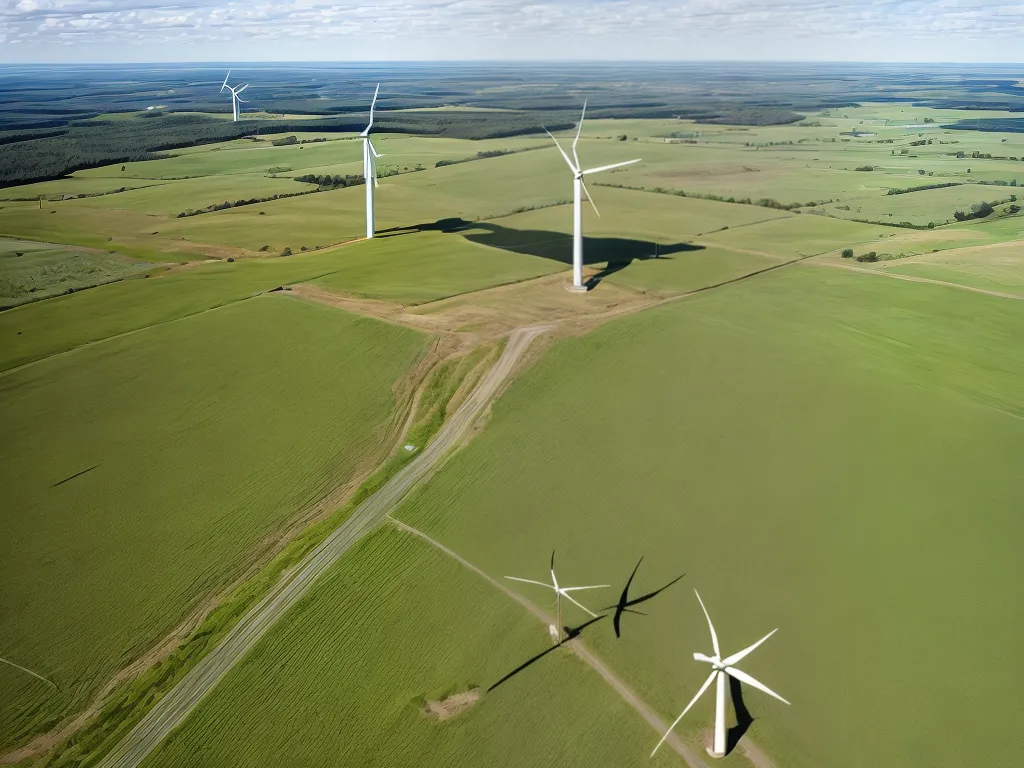
Small-scale wind turbines, also known as micro wind turbines or residential wind turbines, have gained popularity in recent years as more homeowners look to generate their own renewable energy. However, there are several drawbacks to consider before installing a small wind turbine on your property. In this article, I will present the case against small-scale wind turbines by examining their efficiency issues, high costs, noise pollution, and threats to wildlife.
Low Energy Output and Efficiency
One of the biggest issues with small wind turbines is their low energy output compared to their larger utility-scale counterparts. Small turbines have rotor diameters typically measuring 8-25 feet, far smaller than the 200+ foot rotors on commercial wind farms. This makes them less efficient at capturing wind energy.
According to a report from the National Renewable Energy Laboratory (NREL), small wind turbines only achieve 10-30% efficiency in converting wind into electricity. In contrast, utility-scale turbines reach efficiencies over 35-45%. This is because small rotors spin faster in order to capture energy, causing increased drag and turbulence.
Additionally, residential areas tend to have lower average wind speeds and more turbulence than open rural areas ideal for wind farms. With less consistent wind, small turbines produce even less power. Estimates show small turbines generating 2,000-10,000 kilowatt-hours annually, compared to over 600,000 kWh from commercial turbines.
Key Takeaways on Efficiency
- Small wind turbines have rotor diameters of only 8-25 feet, making them less efficient than utility-scale turbines.
- Small turbines only achieve 10-30% efficiency in energy conversion, compared to over 35-45% with large turbines.
- Residential areas have lower wind speeds and more turbulence, further reducing small turbine efficiency.
- Small turbines generate 2,000-10,000 kWh annually, far less than commercial turbines.
High Upfront and Maintenance Costs
Installing a small wind turbine costs tens of thousands of dollars, depending on the tower height, difficulty of installation, permitting fees, and other factors. According to the DOE, small turbines cost anywhere from $3,000 to over $80,000. Even more affordable turbines in the $5,000-15,000 range still represent a big investment for most homeowners.
Ongoing maintenance is also required to keep small turbines operating efficiently. The turbines contain mechanical components like generators, gearboxes, and bearings that need occasional repairs and replacement. Turbine blades require cleaning and can erode over time. Professional maintenance can cost $250-$1,000 per year.
Considering their high costs and low energy yields, most small wind systems have payback periods over 20 years - longer than their expected lifespans! It becomes difficult to justify the investment.
Key Takeaways on Cost
- Installing a small wind turbine costs $3,000 to $80,000+.
- Even more affordable turbines under $15,000 are still a big investment for homeowners.
- Ongoing maintenance costs add $250-$1,000 per year.
- Long payback periods over 20 years make small turbines hard to justify financially.
Noise and Visual Pollution
Residential wind turbines produce noise from the spinning blades passing through the air. This aerodynamic noise increases with rotor tip speed. Small turbines spin their blades very quickly to generate energy, producing irritating, repetitive swooshing or pulsing sounds.
Noise is most bothersome when turbines turn to track the wind. The Doppler effect causes the pitch to rise and fall, creating an inconsistent cycling noise. Small wind projects have faced lawsuits over noise nuisance from neighbors. Proper zoning setbacks can help mitigate noise, but reduce power potential.
Visually, wind turbines stand out with their tall towers and spinning blades. While sleek and high-tech to some, others see small wind projects as unsightly and out of place in residential settings. Even with zoning, turbines can detract from views and negatively impact property values.
Key Takeaways on Noise/Visuals
- Small wind turbines produce aerodynamic "swooshing" or "pulsing" sounds, especially during tracking.
- The Doppler effect creates inconsistent cycling pitches very noticeable to neighbors.
- Lawsuits have been filed over small turbine noise nuisance. Setbacks reduce output.
- Visually, wind turbines stand out and can detract from scenery and views.
Risks to Birds and Bats
Though less studied than large wind farms, small wind turbines also pose risks to wildlife like birds and bats through collisions. Raptors and migratory songbirds are especially vulnerable. Bat lung tissue can hemorrhage from low air pressure near spinning blades.
While fewer in number, small turbines spin faster with smaller blade clearance. They are installed in diverse locations, including migration paths and near vegetation where birds/bats congregate. Limited regulations exist for small wind wildlife impacts. More research and monitoring is needed.
Proper siting away from known flyways and habitat areas can help reduce risks. Automated curtailment options to stop blades during critical times show promise as well. But added costs further diminish small turbine ROI. More study on wildlife impacts is critical.
Key Takeaways on Wildlife
- Small turbines pose collision risks to birds and bats, though less studied than large wind.
- Faster spinning blades with less clearance and diverse locations increase risks.
- Small wind lacks regulations and oversight for wildlife compared to large wind.
- Solutions like better siting and curtailment add more costs to projects.
- Research into actual wildlife impacts from small wind is needed.
Conclusion
In conclusion, small-scale wind turbines come with substantial drawbacks in terms of efficiency, costs, noise/visual effects, and wildlife impacts compared to utility-scale wind projects. While the technology is improving and costs decreasing slowly, residential wind turbines remain difficult to justify economically for most homeowners. Careful consideration of all factors is required when exploring small wind. More unbiased research into the real-world costs, benefits, and risks is needed to determine if and where small-scale wind generation is sensible.